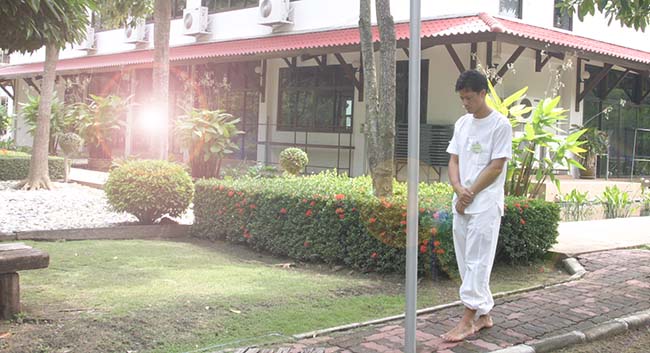
How to practise walking and sitting meditation
in the Insight (also called Vipassana) tradition.
Vipassana is a Pali word which comes from the Pali language root syllables 'Vi' meaning 'clearly' and 'passana' meaning 'to know through direct experience'. So it means 'to know whatever you are experiencing in your present moment clearly'.
In other words, you know your body and mind clearly. Vipassana is usually translated into English as 'Insight Meditation'. It is one of two main groups of Buddhist meditation practice. The other group is the Samatha (Concentration) group.
Although it can be practised in any position and at any time, there are four main positions for practising Insight (Vipassana) meditation formally. They are standing, walking, sitting and lying down.
Walking, together with standing, is usually practised before sitting.
Walking meditation helps to build up energy to support the sitting practice.
The exercises described here conform to the formal practice which is taught at Section 5 of Wat Mahadhatu (Mahadhatu Temple in Bangkok). They, in turn, follow the line of teaching of the renowned Meditation Master Ven. Mahasri Sayadaw of Burma.
Note: It is advisable to learn how to practise with an experienced meditation master. The guidance of a Kalayanamitta (Good friend) is invaluable.
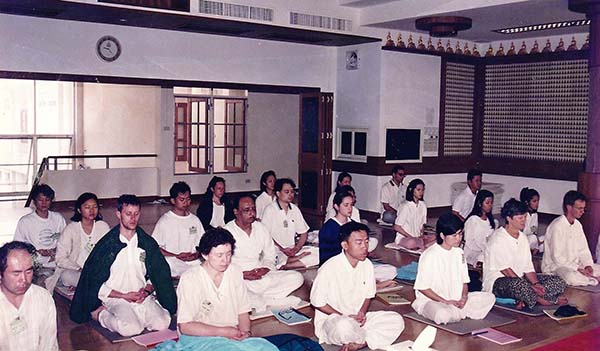
Group practice at a YBAT meditation centre north of Bangkok.
A simplified guide to the first walking exercise.
Select a suitable time when you will not be disturbed.
You will need between ten and fifteen feet of space in which to walk.
Notice your intention to walk.
Be aware of the position of your body - standing.
When you are doing walking meditation, you do NOT focus your attention on the movements of your abdomen which accompany breathing.
|
To help you focus on the present moment, say in mind quietly 'Standing, standing, standing'.
Lift the right foot and place it about six inches ahead of the left foot.
Focus attention on the movement of the foot from the moment it is lifted until it is set down, saying in mind quietly 'Right goes thus (like this)'. |
Move your point of attention to the left foot.
Be aware of the movement of the left foot as it is lifted, moved forward and set down saying 'Left goes thus' quietly in mind .
|
| |
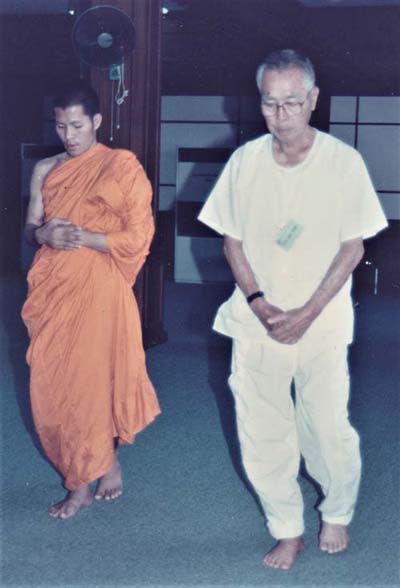
|
Sitting Meditation |
Sit in a stable position on a mat or a large cushion on the floor - or on a chair. Your back should be straight but not stiff. Your blood circulation should not be obstructed.
Your hands should rest on your lap. |
| |
Close your eyes and focus on feeling the movements of the abdomen that accompany breathing.
Put your attention on a point about the size of a fingertip, just below your navel, on the surface of your skin. Keep your attention on this point as it moves naturally when you breathe.
As you breathe in (inhale), this point will move away from the spine out and up a little. As it does so, say in mind 'Rising'.
As you breathe out (exhale), this same point will fall back towards the spine a little. As it does so, say in mind 'Falling'. |
|
While practising Insight meditation, focusing attention on the rising and falling movements of the abdomen forms the base sitting practice. However, sensations, perceptions, thoughts and emotions are also integral to the meditation and should be noted as well. |
There is no aspect of present experience which does not have a place in Insight meditation. |
| |
Walking and sitting practices compliment each other.
|
If you have practised walking meditation for fifteen minutes:
you practise sitting meditation for a further fifteen minutes. 2026
|
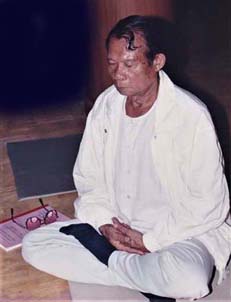
|
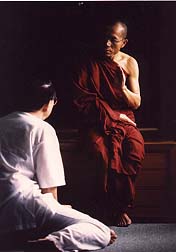
Giving a meditation report
|
If you wish to attend a meditation course at the House of Dhamma, please email at least 5 days ahead of the date of the course you would like to do. A deposit is required for each individual or small group.
If you wish to apply, please email dhamma.art@gmail.com
stating which course you wish to apply for and its date.
Please include your name and surname, your expected address in Thailand, your email address, mobile phone or landline number,
your nationality, occupation and age.
Please also say how many people will be in your group.
|
|






